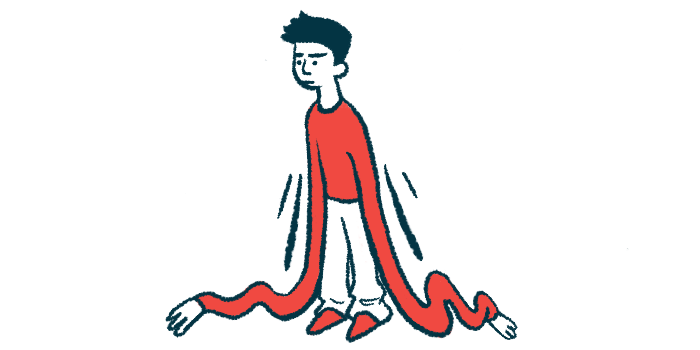Cimzia clinical response, disease activity tied to productivity gains
Researchers studied results among 218 adults with axSpA in RAPID-axSpA trial
Written by |

Long-term use of Cimzia (certolizumab pegol) is associated with a higher clinical response to treatment and lower disease activity in people with axial spondyloarthritis (axSpA). This translated to increased productivity for patients, both at work and in household activities.
“This highlights the importance of targeting these thresholds to limit the burden of axSpA on society and on patients’ daily lives,” the researchers wrote in “Achievement of higher thresholds of clinical responses and lower levels of disease activity is associated with improvements in workplace and household productivity in patients with axial spondyloarthritis,” published in Therapeutic Advances in Musculoskeletal Disease.
AxSpA is a form of chronic arthritis that mainly affects the joints of the spine and the sacroiliac joints, where the base of the spine meets the pelvis. Ankylosing spondylitis is an axSpA subtype marked by changes to the spine visible on an X-ray. When damage can’t be seen on X-rays, it’s called nonradiographic AxSpA.
Symptoms include chronic pain, stiffness, fatigue, limited spinal mobility, and physical function that contribute to productivity losses and full days of work missed (absenteeism). Presenteeism, defined as a 50% or more reduction in productivity, also occurs often with axSpA.
The disease’s impact on work productivity is known, but few studies have addressed its affect on household activities. Results from the Phase 3 clinical trial RAPID-axSpA (NCT01087762) indicated Cimzia, a biologic treatment, improved productivity at work and at home.
Clinical response, disease activity with Cimzia
“However, the association between the achievement of higher clinical response thresholds or lower levels of disease activity and improvements in work and household productivity over long-term biologic treatment has not been previously evaluated,” wrote an international team of researchers who analyzed the association between clinical response and disease activity with productivity in 218 adults with axSpA who participated in the RAPID-axSpA over four years.
The participants had a mean age of 39.5 and were mainly men (61.9%). Most (72%) worked outside the home, while the remaining 28% were unemployed partly because they were unable to work due to arthritis (42.6% of those unemployed).
The clinical response to treatment was analyzed with the Assessment of SpondyloArthritis International Society (ASAS) criteria.
ASAS20 is defined as a relative improvement of at least 20% and an absolute improvement in at least one unit among at least three of four domains — patient global assessment of disease, pain, function, and inflammation. ASAS40 refers to a relative improvement of at least 40% and absolute improvement in at least two units among at least three domains and no worsening in the remaining domain. ASAS-partial remission is a measure of disease remission where the improvement is in at least two or more units in all four domains.
Disease activity was measured by the composite measure Ankylosing Spondylitis Disease Activity Score (ASDAS), comprising elements such as back pain, peripheral pain or swelling, duration of morning stiffness, the patient’s perception of disease activity, and C-reactive protein levels in the blood, a measure of inflammation.
The proportion of patients achieving higher scores of clinical response increased over time. For example, ASAS40 was achieved by 54.4% of the patients six months into the trial and 67.8% after four years.
Moreover, ASDAS major improvement was reported by 44.3% after six months and 49% after four years.
Achieving higher treatment response or lower disease activity was associated with lower work absenteeism as early as week 4. For example, those achieving partial remission had a mean of four days of absenteeism, while those who didn’t achieve partial remission were absent for 32 days.
Based on the ASDAS score, those with no disease activity missed five days of work, while those with low disease activity missed 15.6 days, after four years. The number of days absent from work was higher in those with high (32.7 days) or very high (93.4 days) disease activity.
Similar results were observed with work presenteeism and productivity at home.
Patients achieving ASAS40 couldn’t perform household activities in 21.7 days compared to 143.4 days among those achieving ASAS20. Those achieving partial remission had fewer absent days from household activities than those who didn’t achieve it (4.3 days vs. 111.1).
Patients with no disease activity were unable to perform household activities in 8.2 days, while those with low disease activity were absent for 30.7 days by the study’s end. Patients with high disease activity were absent for 121.1, and those with very high disease activity for 321.2.
“This study improves the understanding of how treatment strategies can improve productivity; the clinical benefit has been demonstrated, and future work should seek to understand the economic impact,” the researchers wrote.






